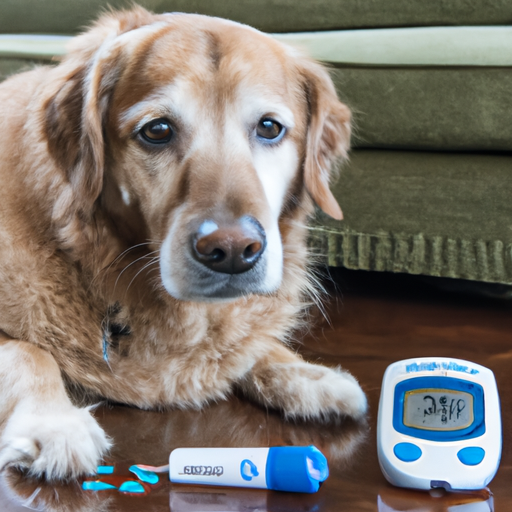Diabetes is not just a human disease; our furry friends can also fall victim to this chronic condition. If you’re a caregiver to a beloved pet, it’s important to understand the symptoms of canine diabetes. This guide will help you understand what to look out for.
1. Understanding Canine Diabetes
Just as in humans, diabetes in dogs is characterized by the body’s inability to regulate blood sugar levels. There are two types:
- Type 1: The body doesn’t produce enough insulin
- Type 2: The body doesn’t respond correctly to insulin
2. Key Symptoms of Canine Diabetes
Knowing the signs is crucial for early detection and management. Watch for these symptoms:
- Increased thirst
- Increased urination
- Weight loss despite normal or increased appetite
- Cloudy eyes
3. Detailed Explanation of Symptoms
Let’s delve deeper into each symptom:
Increased Thirst
Dogs with diabetes can’t use their body’s glucose properly, leading to high blood sugar levels. This causes dehydration, which your dog tries to compensate for by drinking more.
Increased Urination
Increased water consumption leads to more frequent urination. You may notice your dog asking to go outside more often or having accidents in the house.
Weight Loss
Despite eating regular or even larger meals, a diabetic dog might lose weight. This is because the body starts to break down fat and muscle for energy.
Cloudy Eyes
Dogs with diabetes are more likely to develop cataracts. This can cause their eyes to look cloudy or bluish.
4. Risk Factors for Canine Diabetes
Certain factors can increase your dog’s risk of developing diabetes:
- Obesity
- Age (middle-aged to older dogs are more susceptible)
- Unspayed female dogs
- Certain breeds (including Samoyeds, Miniature Schnauzers, and Toy Poodles)
5. Diagnosis and Treatment
If you notice these symptoms in your dog, visit your vet immediately. Diagnosis usually involves blood and urine tests.
Treatment involves daily insulin injections and dietary changes. Regular exercise can also help manage your dog’s blood sugar levels.
6. Prognosis for Canine Diabetes
With proper management, dogs with diabetes can live a normal, healthy life. Regular vet check-ups are crucial to monitor your dog’s condition and adjust treatment as necessary.
7. Preventing Canine Diabetes
While you cannot completely prevent Type 1 diabetes, you can reduce the risk of Type 2:
- Maintain a healthy weight for your dog
- Provide regular exercise
- Feed a balanced diet
8. FAQ Section
Here are some commonly asked questions about canine diabetes:
Q: Can canine diabetes be cured?
No, there is currently no cure for canine diabetes. However, it can be managed successfully with the right treatment and lifestyle changes.
Q: How often should I take my diabetic dog to the vet?
Initially, you’ll likely need to visit the vet every few weeks. Once your dog’s diabetes is under control, you may only need to go every 3-4 months.
Q: Can my dog live a normal life with diabetes?
Absolutely. With careful management, your dog can lead a long, healthy, and happy life.
Q: Should I change my dog’s diet if they have diabetes?
Yes, dietary changes are often necessary. Your vet can recommend the best diet for your diabetic dog.
Remember, early detection is key to managing canine diabetes. So, keep a watchful eye on your dog’s behavior and health, and consult your vet if anything seems off. Your dog is relying on you – and with the right care and attention, they can continue to live a full and happy life.



